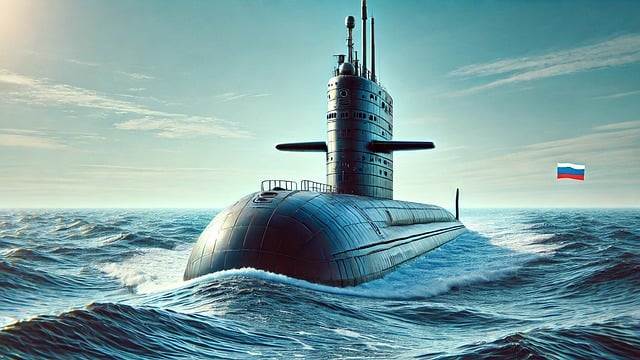Submarines have evolved from surface-effect ships to highly advanced stealth vessels, driven by exploration and military needs. Modern submarines are engineering marvels with advanced sonar, weaponry, and propulsion systems, achieving impressive speeds while maintaining near undetectability. Their unparalleled stealth, maneuverability, and versatile capabilities make them indispensable for various naval operations, including surveillance, intelligence gathering, anti-submarine warfare, and strategic deterrence. With ongoing technological advancements, submarines continue to be vital assets in modern naval warfare, offering undetected mobility, extended submerged endurance, and multi-functional capabilities that ensure maritime security and global reach.
Submarines have evolved from humble beginnings to become indispensable assets in modern naval warfare. With their unparalleled stealth and maneuverability, these underwater vessels offer a unique capability for covert operations and strategic strike. Armed with advanced weaponry and sensors, submarines play a pivotal role in protecting national interests and projecting power globally. This article explores the evolution of submarines, their tactical advantages, and the innovative technologies shaping their future, solidifying their position as key players on the modern maritime stage.
- The Evolution of Submarines: Past and Present
- Unparalleled Stealth and Maneuverability
- Weaponry and Sensor Capabilities
- Strategic Role in Modern Naval Operations
- Future Trends and Innovations in Submarine Design
The Evolution of Submarines: Past and Present
Submarines have evolved significantly since their inception, transforming from primitive underwater boats to highly advanced stealth vessels. Historically, submarines were developed for exploration and military applications, with early designs focusing on surface-effect ships that could operate just below the waterline. Over time, technological advancements led to the creation of fully submersible craft capable of extended periods under water. These innovations marked a turning point in naval warfare, as submarines became powerful tools for stealth operations, intelligence gathering, and offensive capabilities.
Today’s submarines are marvels of engineering, equipped with sophisticated sonar systems, advanced weaponry, and advanced propulsion technologies. They can travel at impressive speeds while remaining nearly undetectable, thanks to their streamlined designs and silent running capabilities. Modern submarines play pivotal roles in various naval missions, from patrolling coastal waters to conducting special operations and providing strategic deterrence. Their versatility and unique abilities continue to shape the future of naval warfare, ensuring they remain an indispensable asset for modern navies worldwide.
Unparalleled Stealth and Maneuverability
Submarines offer an unparalleled level of stealth and maneuverability beneath the waves, making them invaluable assets in modern naval warfare. Capable of operating at great depths, they can avoid detection by enemy ships and aircraft, thanks to advanced sonar systems and quiet propulsion technologies. This stealth allows submarines to conduct surveillance missions, gather intelligence, and even execute precision strikes with minimal risk of being spotted.
Their maneuverability is equally impressive, as submarines can quickly change direction, dive to extreme depths, or surface unexpectedly. This agility enables them to evade countermeasures, such as depth charges and sonar-guided missiles, making them highly difficult targets. The combination of stealth and maneuverability makes submarines versatile and effective in various naval operations, from anti-submarine warfare to special forces deployment.
Weaponry and Sensor Capabilities
Submarines have evolved into formidable weapons systems, equipped with a diverse array of weaponry and advanced sensor capabilities. Their ability to operate discreetly beneath the waves offers a strategic advantage in modern naval warfare. Armed with torpedoes, anti-ship missiles, and advanced guns, these underwater vessels can engage enemy ships and submarines alike, making them essential for maritime security.
The sensory equipment on board is equally impressive, featuring sonars, radar systems, and optical sensors that detect and track targets with remarkable accuracy. These sensors enable submarines to navigate complex underwater environments, identify potential threats, and gather crucial intelligence. With their stealth and advanced technology, submarines play a pivotal role in protecting national interests, deterring aggression, and ensuring maritime dominance.
Strategic Role in Modern Naval Operations
Submarines play a strategic role in modern naval warfare by providing silent and undetected mobility, allowing them to operate far from home ports. This stealth capability enables submarines to conduct surveillance, gather intelligence, and execute precision strikes with minimal risk of detection. Their ability to remain submerged for extended periods significantly enhances their effectiveness in denying enemy access to vital areas, controlling sea lines, and protecting commercial shipping lanes.
Additionally, the strategic flexibility of submarines is amplified by their armament, which includes torpedoes, cruise missiles, and in some cases, ballistic missiles. This versatility allows them to engage a range of targets, from enemy ships to high-value terrestrial installations, making them an indispensable asset for modern navies across the globe.
Future Trends and Innovations in Submarine Design
The future of submarines in naval warfare is set to be transformed by innovative designs and advanced technologies. One prominent trend is the development of quieter, more stealthy submarines equipped with sophisticated sensor suites and multi-functional capabilities. These advancements enable submarines to operate more effectively in shallow waters and close to enemy coastlines, enhancing their ability to gather intelligence, conduct surveillance, and execute precise strikes.
Additionally, there is a growing focus on modularity and flexibility in submarine design. This approach allows for rapid customization and reconfiguration of vessels based on mission requirements, whether it’s for specialized research, underwater repair missions, or advanced weapon systems integration. As technology continues to advance, we can expect even more groundbreaking innovations that will further propel the capabilities and importance of submarines in modern naval warfare.
Submarines have evolved from silent predators of the past to become indispensable assets in modern naval warfare. Their unparalleled stealth, maneuverability, and advanced weaponry make them crucial for covert operations, intelligence gathering, and strategic deterrence. As technology continues to advance, future submarine designs will incorporate innovative propulsion systems, enhanced sensor capabilities, and autonomous systems, further solidifying their role as game-changers on the ocean’s depths.
